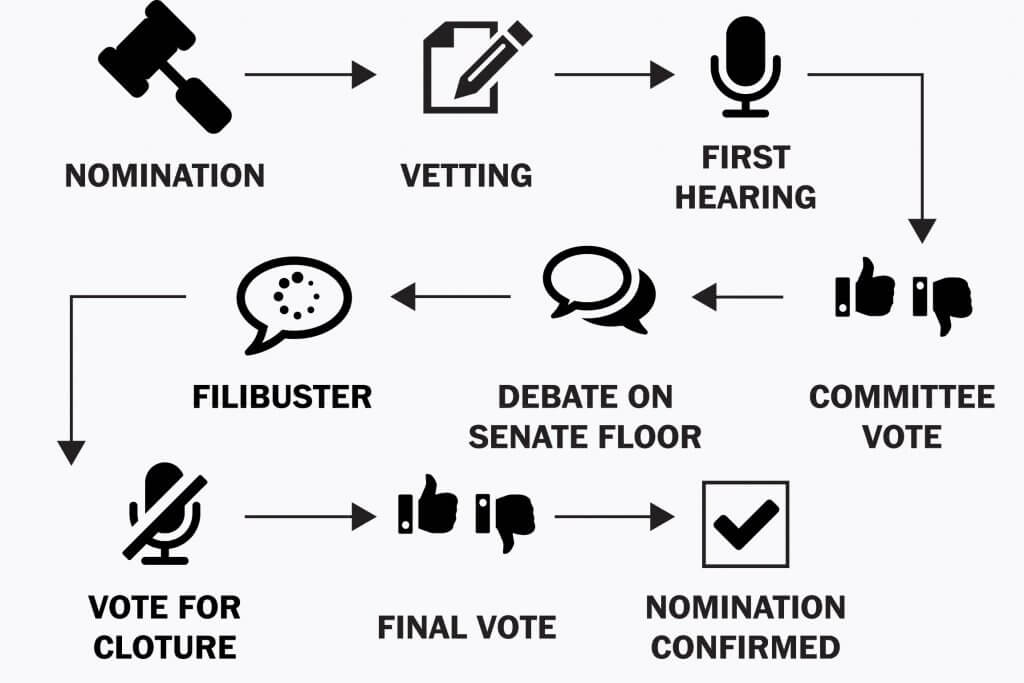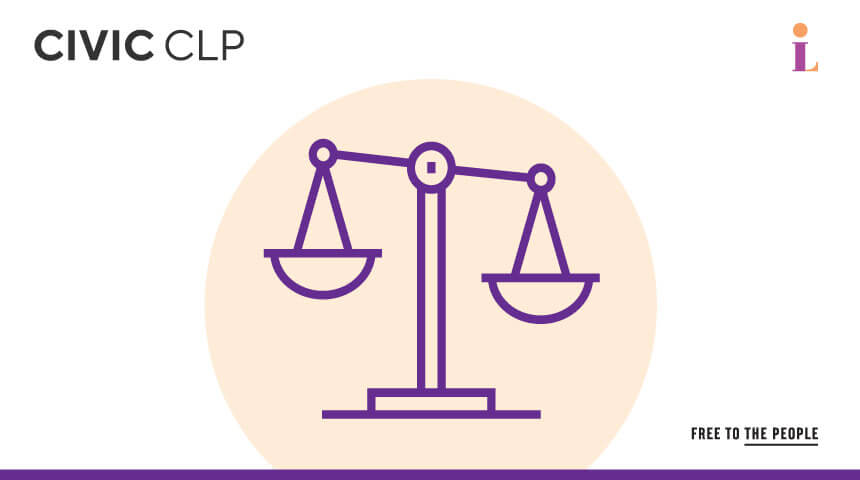The passing of Supreme Court Associate Justice Ruth Bader Ginsberg on September 18, 2020 has created a vacancy in the 9-seat Supreme Court. There is no recent precedent for a confirmation vote so close to a presidential election. Nomination and confirmation of a new member of the Court involves both the President and the Senate.
About the President: Donald J. Trump, Republican, was elected the 45th President of the United States in November 2016. (Source: Whitehouse.gov)
About the Senate: The 116th Congress (whose 6-year terms last from 2019-2021) is comprised of the Majority Party: Republican (53 seats) and Minority Party: Democrat (45 seats). Other Parties include: 2 Independents (both caucus with the Democrats), for a total of 100 seats. (Source: Senate.gov)
“The Constitution states that Justices ‘shall hold their Offices during good Behaviour.’ This means that the Justices hold office as long as they choose and can only be removed from office by impeachment.” A Supreme Court Justice may serve for life.
While this position has typically gone to lawyers and judges, “the Constitution does not specify qualifications for Justices such as age, education, profession, or native-born citizenship. A Justice does not have to be a lawyer or a law school graduate, but all Justices have been trained in the law.” (Source: Supremecourt.gov)
Below is the workflow for nominating and confirming a Supreme Court Justice:

About the Supreme Court: The Supreme Court interprets the Constitution to upload the rule of law. In short, it makes the decision on what is or is not legal by hearing arguments on both sides of the issue, studying past applications of the law, as well as the Constitution.
The decisions of the Supreme Court have an important impact on society at large, not just on lawyers and judges. The decisions of the Court have a profound impact on high school students. In fact, several landmark cases decided by the Court have involved students, e.g., Tinker v. Des Moines Independent School District (1969) held that students could not be punished for wearing black armbands to school to protest the Vietnam War. In the Tinker case, the Court held that “students do not shed their rights at the schoolhouse gate.” (Source: USCourts.gov)
It is common knowledge, and often heard in movies and on television, that when a person is arrested they should be told that they “have the right to remain silent”. This is because of Miranda v. Arizona (1966) for which the Court ruled that those in police custody must be informed of their rights.
Some additional examples of how Supreme Court rulings affect our everyday lives include:
- Brown v. Board of Ed (1954) – a landmark case in which the justices ruled unanimously that racial segregation of children in public schools was unconstitutional.
- Loving v. Virginia (1967) – a landmark case in which justices ruled unanimously to strike down state laws banning interracial marriage in the United States.
- Board of Education of Independent School District No. 92 of Pottawatomie County v. Earls (2002) – Justices ruled (5–4) that suspicionless drug testing of students participating in competitive extracurricular activities did not violate the Fourth Amendment, which guarantees protection from unreasonable searches and seizures.
- Citizens United v. Federal Election Commission (2010) – Justices ruled (5–4) that laws that prevented corporations and unions from using their general treasury funds for independent “electioneering communications” (political advertising) violated the First Amendment’s guarantee of freedom of speech.
- Obergefell v. Hodges (2015) – Justices ruled (5-4) that state bans on same-sex marriage and on recognizing same-sex marriages duly performed in other jurisdictions are unconstitutional under the due process and equal protection clauses of the Fourteenth Amendment to the U.S. Constitution.
- Our Lady of Guadalupe School v. Morrissey-Berru (2020) – Justices ruled (7-2) that federal employment discrimination laws do not apply to teachers at church-run schools.
Additional Web Resources:

